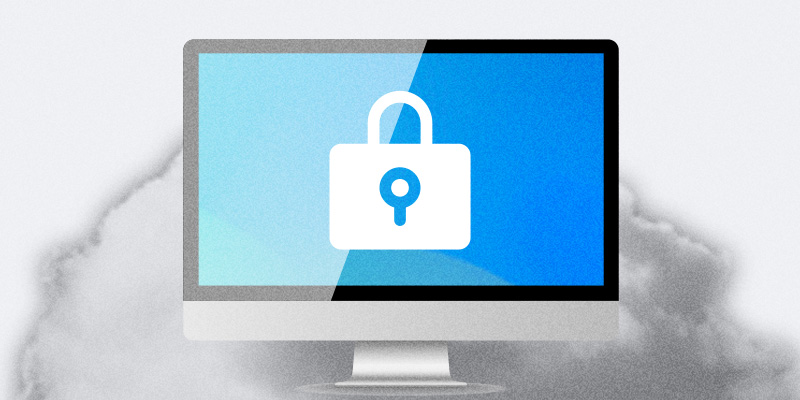
How to Secure Your Ncino Salesforce Integration
Integration points between Salesforce and third-party solutions are a frequent failure point and vulnerability to data loss or corruption.

Why It Matters: Financial companies work with incredibly sensitive information including personally identifiable information (PII) and, of course, financial data. This type of information is highly targeted by cybercriminals and must be vigorously protected.
- A failure to install proper safety considerations for an nCino Salesforce integration can lead to exposure of sensitive data.
- Any breaches will catch the eye of regulatory commissioners and can result in steep fines and penalties.
- Salesforce itself is secure, but any additions or customizations introduce potential vulnerabilities that require direct attention.
Here are 9 ways to secure your nCino Salesforce integration:
- Know Your Compliance Requirements
- Ensure Proper Permissions
- Maintain Current Data Backups
- Utilize Encryption
- Enforce Strict Access Controls
- Reduce Complexity Wherever Possible
- Increase Flexibility with Speedy Releases
- Scan for Vulnerabilities
- Communicate Best Practices
1. Know Your Compliance Requirements
The financial industry is subject to a series of data protection regulations that depend on where you are located, the types of information you handle, and the customers you serve.
We recently put together an ebook that outlines some key data security regulations, which you can check out here for free. But knowing which regulations apply to you and how the data is handled in your nCino Salesforce integration will impact your ability to remain compliant.
Utilize an automated tool to create logs of who entered changes to your system, when it happened, and where these changes were made.
The logs are an essential aspect of providing essential information during a regulatory audit, which will happen from time to time.
2. Ensure Proper Permissions

You need to be strict about who can access the information stored in your nCino Salesforce integration. Sensitive customer data such as personally identifiable information (PII) and financial information needs to be protected as much as possible. Team members that don’t need access to this data to complete their job duties only pose a risk to the security of this sensitive information.
Maintain constant oversight into what your team members can and can’t access. Leverage a policy scanner to automate this process and ensure 100% compliance.
Accidental deletions become more likely with every team member that has access to a piece of data. Reduce the chances of experiencing these costly mistakes by updating employee permissions.
3. Maintain Current Data Backups
Every data security strategy needs to take worst-case scenarios into account—an nCino Salesforce integration is no different. System outages and data loss happen for a wide variety of reasons—everything from natural disasters, to accidental deletions, to power failures. Even the strongest data security strategies will still have vulnerabilities.
A recent data backup and the ability to quickly recover this data is essential to adhering to regulatory standards and properly protecting sensitive system data.
Financial institutions have a series of IT requirements for these types of DevOps tools. This includes certifications, data retention, recovery time objectives, disaster recovery, the right to be forgotten, and more. Be sure you have access to these capabilities.
4. Utilize Encryption
Transferring and storing sensitive data poses inherent risks. Seemingly innocuous exposures can lead to improperly disclosing this data, leading to a leak or falling out of compliance. These situations can be remedied by obfuscating this data through tactics such as encryption and data masking.
Encryption is an essential security tactic that hides sensitive data while still making it accessible by team members with the proper credentials.
These tools should be utilized in both your nCino Salesforce environment as well as the backup repository where the information is stored. This helps maintain data security compliance standards as well as providing those who trust you with their sensitive information the protection they deserve.
5. Enforce Strict Access Controls

The stability of the platform around your nCino integration will directly impact the security of the integration itself. A cybercriminal that gains access to a smaller part of the platform will be able to access any surrounding integrations and data sets.
Implementing a strict password policy and multi-factor authentication provides a first line of defense against bad actors trying to break into your system.
Sign-in portals are often the first point of attention for someone trying to access your data. Logging into a user’s account is an easy way to get into your Salesforce environment. Strong passwords and multi-factor authentication go a long way to prevent this.
6. Reduce Complexity Wherever Possible
Complex processes increase the potential for mistakes. It’s simply a matter of human nature that we get overwhelmed when there are a series of complicated steps that are needed to accomplish something. This idea transfers to our DevOps processes—and our integrations—when things become too complex.
Utilizing DevOps tools that operate on the same platform reduces complexity and magnifies the potential benefits.
AutoRABIT’s nCino Salesforce integration is supported through our ARM and Vault tools that provide the support a financial institution needs to process and protect their sensitive data. A common platform ensures processes work together seamlessly and avoid any gaps in coverage.
7. Increase Flexibility with Speedy Releases
The data security landscape is constantly changing. Cyberattacks are becoming more sophisticated. An ability to respond to these emerging threats will increase the effectiveness of a financial institution’s data security strategy because it will be more agile in its defenses.
Your DevOps pipeline can contribute to the security of your nCino Salesforce integration if it’s able to quickly produce reliable updates and applications.
The supporting infrastructure around your nCino integration can either be a help or hindrance to the success of your data security strategy. Implement strategic automation with tools like static code analysis and automated release management to catch errors while expediting development processes.
8. Scan for Vulnerabilities

Threats to the security of our systems aren’t always immediately apparent. Legacy bugs and errors might not create an issue for a while, but when they do, bad things can happen. Likewise, bad actors can gain access to a system without making their presence known. And the longer these scenarios are allowed to continue, the greater the threat of costly and damaging data loss events.
Automated scans of your nCino integration and the environment surrounding it need to be routinely run to verify the absence of data security threats.
A static code analysis tool can be used to seek and flag technical debt or create repeated reports for the stability of your applications and updates. Access logs and exported reports should also be frequently checked for anything out of the ordinary.
9. Communicate Best Practices
The way in which our team members interact with a nCino Salesforce integration will have a direct impact on its level of security. We’ve mentioned how important it is for users to maintain strong passwords, but this isn’t the end of their responsibility for proper practices.
Accessing company programs on secured networks, locking computers when away from the screen, and more will help secure your Salesforce environment and any integrations.
Open communication is an essential aspect of a streamlined Salesforce platform. Be sure your team members have updated information related to what is expected of them and what they can do if they notice something out of the ordinary.
Next Step…
Financial institutions need to take every possible precaution when it comes to data security. Your clients depend on it—and so does your ability to remain compliant.
Check out our blog “Hidden Salesforce Data Security Risks for Financial Institutions” to ensure you know what you’re up against.
FAQs
Why are banks among the most frequent targets for cybercriminals?
Banks deal with their customers most sensitive information—financial information, loans, personal finances, and personally identifiable information. All of these types of data are incredibly attractive to cybercriminals. Any level of access to this data enables them to potentially steal directly from the individual or even steal their identify. Of course, these types of breaches can be catastrophic for the affected customers. Cybercriminals continue to increase their attacks through more frequent and more mature methods. Banks need to be aware of the potential for loss while remaining current on contemporary systems of attack.
How do I know which data security regulations apply to my organization?
The industry in which you work and the areas you do business will impact which data security regulations apply to your specific organization. For example, anybody that does business in the European Union will be susceptible to the stipulations of the General Data Protection Regulation (GDPR). For a more complete explanation of some of the most common data security regulations, check out our ebook “Staying Compliant with Key Data Security Regulations.” You’ll find details on the parameters of top regulations and how to address their requirements to stay in compliance and avoid costly fines and penalties.
How can I ensure my Salesforce applications and updates are secure?
The application development pipeline has a lot of moving parts. There are a series of processes and departments that need to work in alignment to produce the best possible products while also keeping an eye on costs. The most recent evolution of this system is what’s known as DevSecOps—the combination of development, security, and operations considerations throughout the entirety of the application lifecycle. This includes the utilization of automated tools like static code analysis, data loaders, and more to achieve a true CI/CD pipeline. This approach helps organizations create the most secure applications and updates because there are multiple layers of testing and may automated processes.

